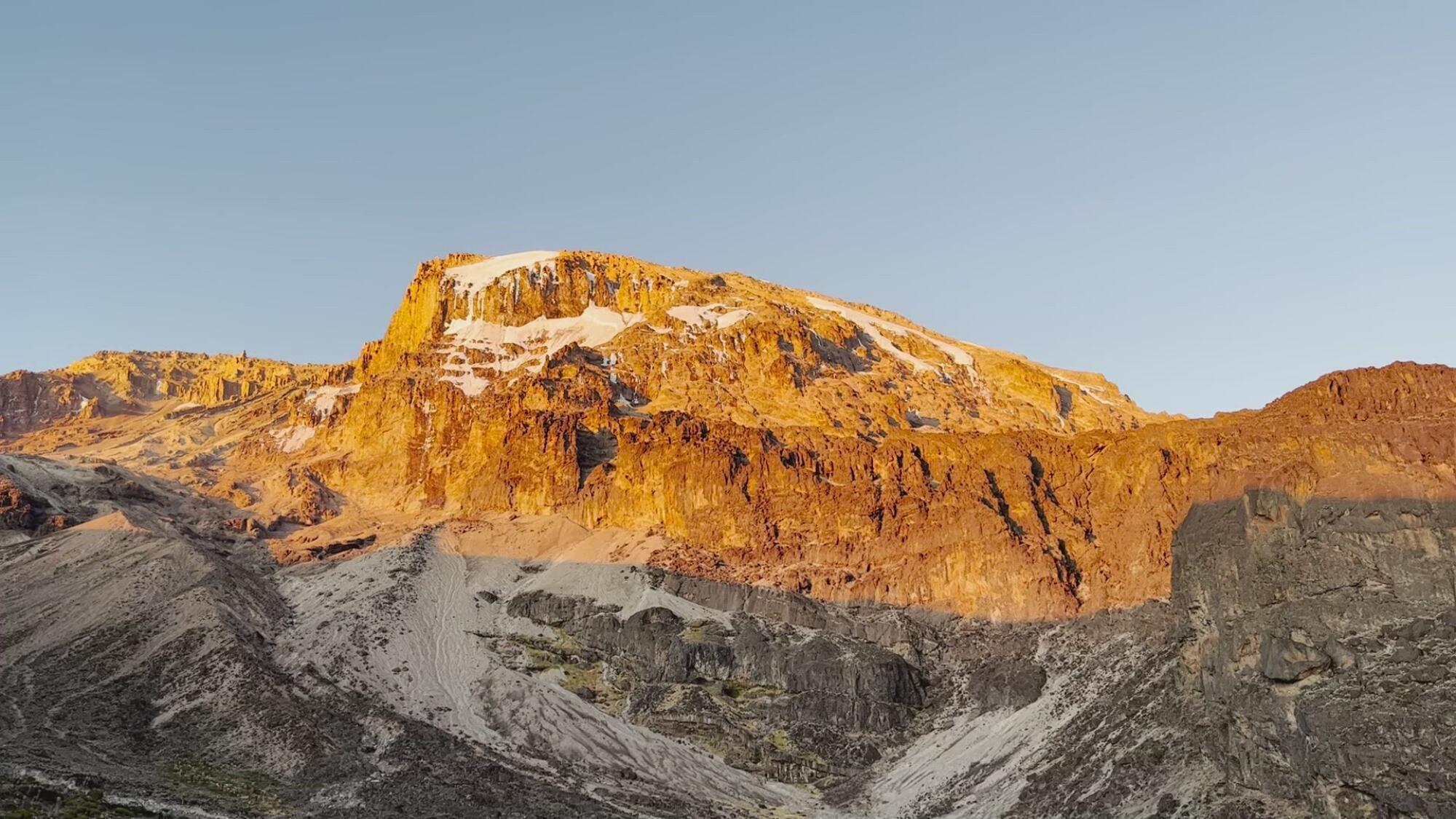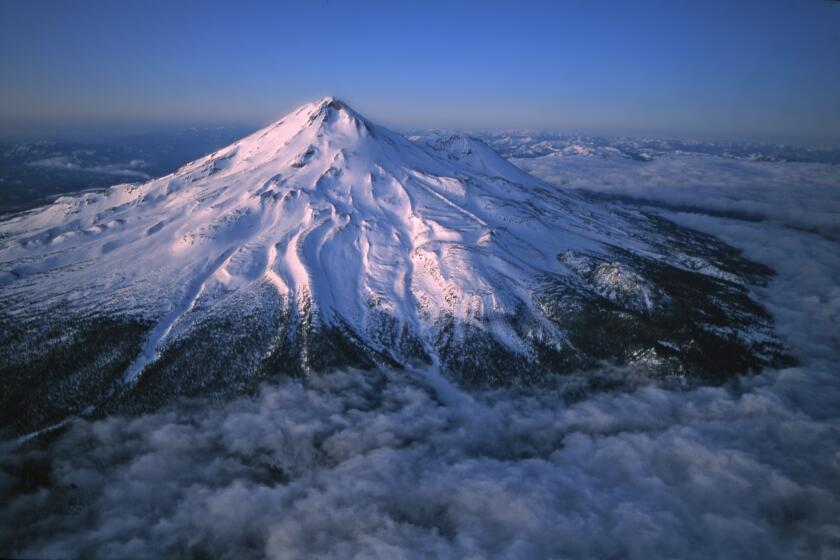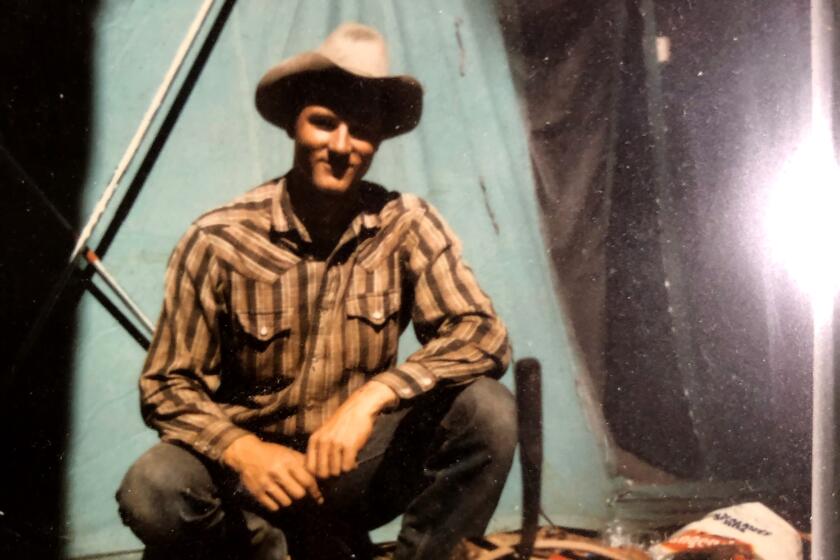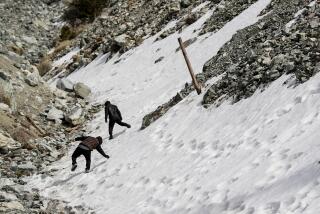On the second day of a trek to the summit of Mt. Kilimanjaro, our guide announced we had a problem: The river he planned to get water from was bone dry.
A tributary he hoped could serve as a backup supply for our camp was nothing but dust and stone too.
The guide, Andrew Mafie, sent our porters, who had already carried an immense amount of gear for nearly six hours, on a 90-minute round trip to get water we needed to drink, cook and clean. They lugged it back to camp in heavy, sloshing buckets.
As Mafie explained the situation, the clouds parted. For the first time since arriving in Tanzania, I had a full view of the summit dome. It was enormous, intimidating and, shockingly, almost barren.
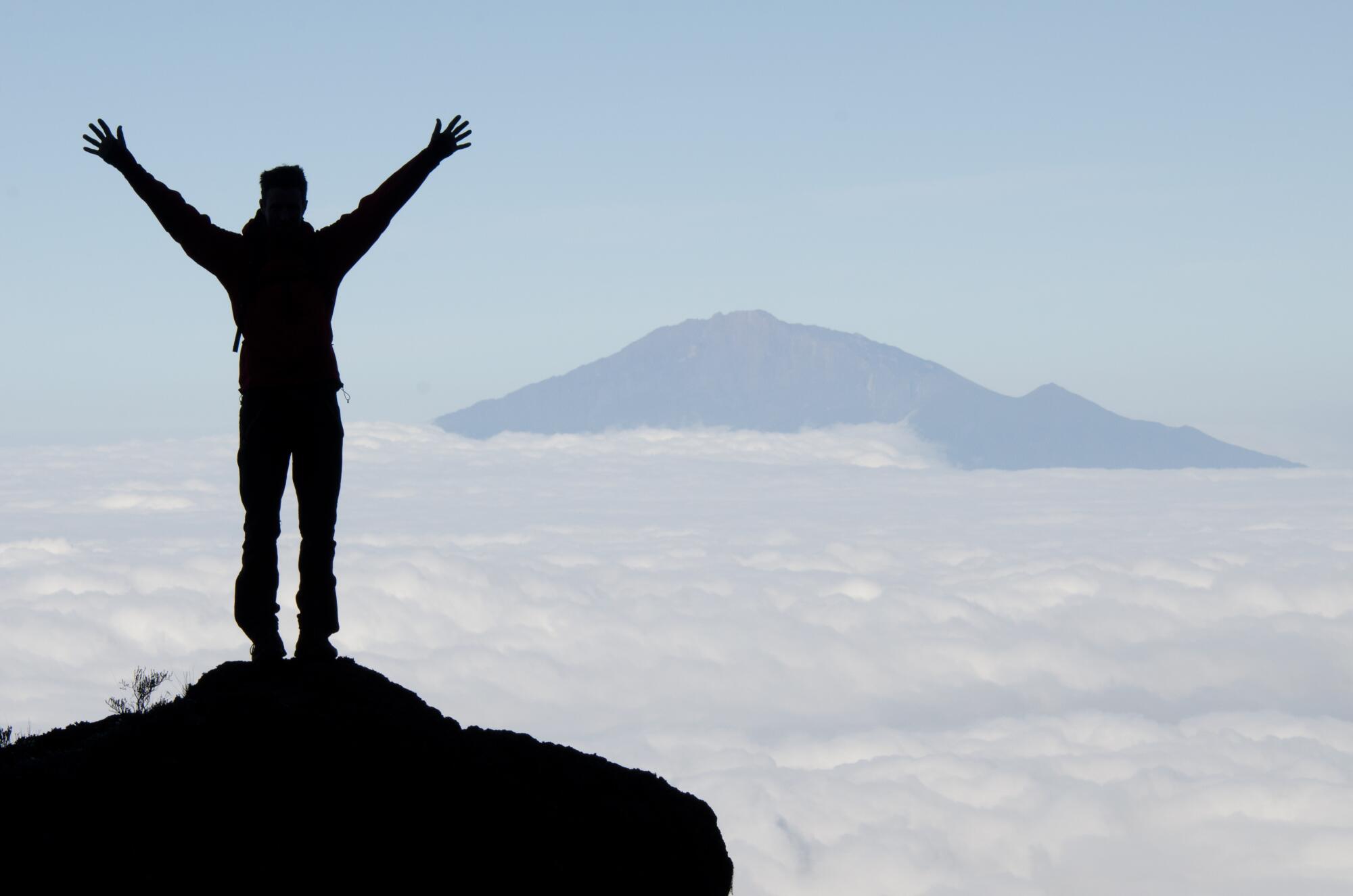
“In the past, the peak was covered by ice and glaciers and snow. But because of global warming … it’s like bare rock,” Mafie said. “We are getting worried.”
Climbing to the roof of Africa has never been easy, but as climate change turns the storied snows of Kilimanjaro to dust, and concerns about ethical travel complicate the very idea of adventure in the developing world, it is arguably more fraught than ever.
In the past, the thick glaciers that covered Kilimanjaro’s broad, 19,341-foot summit resembled a polar ice cap, only this one is sticking straight up from the equator — among the most startling and compelling spectacles on the planet.
For centuries, people living on the tropical coast looked at the mountain and assumed it must be home to the god of cold, Mafie said. His ancestors, who farmed the lush slopes, believed it was home to the god of water.
But those glaciers have lost about 90% of their ice since the 1800s, according to the United Nations Environment Program, and the pace of evaporation appears to be accelerating. Scientists warn the glaciers could disappear within decades.
The culprit isn’t just rising temperatures; it’s also a changing weather pattern. Long, reliable wet seasons in spring and fall used to dump fresh snow on top of the mountain and shower the dense forests on its lower reaches. Now, the rainy periods have become more sporadic.

That makes it harder for farmers to grow crops and for groups such as the Masai to find grazing grounds for the cattle that are central to their way of life.
At least the trekkers are once again flooding in. Before COVID-19, about 30,000 people per year attempted to reach the summit of Kilimanjaro. Those tourists all but vanished during the pandemic, but they are returning in huge numbers, according to guides and tour operators.

That’s good news for Tanzania, whose per capita gross domestic product is among the world’s lowest. Tourism — safaris in Serengeti National Park, beach trips to Zanzibar and climbs of Kilimanjaro — provides the nation’s largest source of foreign currency.
Local officials have long sought to maximize the economic benefits of Kilimanjaro by requiring all would-be climbers to hire Tanzanian guides and porters, even though ascents do not require specialized mountaineering equipment or expertise — they’re just very long hikes.
“I had never been to Africa, and Kilimanjaro, one of the famed seven summits, has been in the back of my mind since I started bagging peaks more than three decades ago.”
— Jack Dolan
Kilimanjaro trekking companies typically offer packages that include a couple of guides, porters to carry camping gear, separate kitchen and dining tents, a cook, a waiter and supplies sufficient to make three multicourse meals per day. If you pay a little extra, they throw in a porta-potty with a privacy tent and a dedicated porter, cheekily called a “pilot,” to clean and carry it all.
For decades, that system has turned me off. I’m accustomed to climbing light and fast in the Sierra, carrying the minimum of supplies on my back. Going slow and heavy, as they do in Tanzania, seemed expensive and crowded. Getting away from people is a big reason I go to the mountains.
But I had never been to Africa, and Kilimanjaro, one of the famed seven summits (the highest point on each continent) has been in the back of my mind since I started bagging peaks more than three decades ago.
So when a frequent trekking partner, Andy Lehren, floated the idea of climbing Kilimanjaro a few years ago, I didn’t say no. When a wave of deaths and devastating diagnoses rolled through our friends and families this year, we agreed time was no longer on our side, and we had to do it soon.

The first obstacle was choosing from the long, bewildering list of trekking companies.
One of the most expensive, charging about $10,000 for the weeklong climb, promised tents so big you can stand upright, cots so you don’t have to sleep on the ground and chefs trained by the Culinary Institute of America. It seemed they were marketing an epic outdoor adventure to people who’d rather not bend over.

Subscribers get exclusive access to this story
We’re offering L.A. Times subscribers special access to our best journalism. Thank you for your support.
Explore more Subscriber Exclusive content.
Another promised to carry “enough defibrillators.” It’s fine to be prepared, but if I believed I might need even one defibrillator, climbing a 19,000-foot mountain would not be my vacation of choice.
Eventually, we picked a company founded by a local porter who rose to become a guide and eventually started his own business, so our money would go straight into Tanzanian pockets.
The company is also a member of the Kilimanjaro Porters Assistance Project, a collective started in the early 2000s to improve conditions for the hardest-working people on the mountain.
Member companies promise to pay porters fair wages, feed them three nourishing meals a day (one is common, according to porters I spoke with), provide them appropriate equipment such as hiking boots, weatherproof clothing and tents to sleep in, and abide by a limit on how much they can be asked to carry — just over 40 pounds.
Our climb, with a total of 13 staffers for the two of us, started at the Londorosi Gate, one of several entrances to Kilimanjaro National Park. It sits in a rainforest at about 7,400 feet, nearly the same elevation as Mammoth Lakes.
We watched our porters drop their packs on scales in front of park rangers to prove they weren’t carrying more than their share. A few of the bags were slightly overweight, so the porters shifted loads and traded items — the toilet brush got passed around a lot — until it all worked out.

From Londorosi, we climbed for about 2½ hours through dense jungle, serenaded by large, black-and-white colobus monkeys that roamed the canopy above.
When we got to the first camp, at 9,137 feet, our porters had already set up everything. I was delighted to find my private tent spotless inside with a sleeping pad and a fresh clean pillow.
Our cook, Edward John Mrumbe, was already roasting a chicken.
In the mountains at home, we’d have had to drop our heavy backpacks and set up our old, filthy tents by ourselves. We’d have blown up inflatable rubber pillows, if we had the energy, and then poured boiling water into a bag of freeze-dried ... whatever. We probably would have eaten that sitting on rocks telling each other, “This is the life.”
This iconic peak can be treacherous, especially for novices and their mountain guides. One died this summer. Here’s how the tragedy unfolded.
Andy and I were still marveling at the contrast when our waiter, Hamisi Kassimu Kiwelu, arrived with our first course.
The next day we climbed to Shira Camp, about 11,500 feet. That’s where we found the dry riverbeds.
“Today, we struggled,” Mafie, our guide from Trek2Kili, told me, as we waited a little longer than the night before for dinner. He was apologetic. I was shocked and a little ashamed that they hadn’t asked me and Andy to help fetch the water. Without it, our trek would have been over.
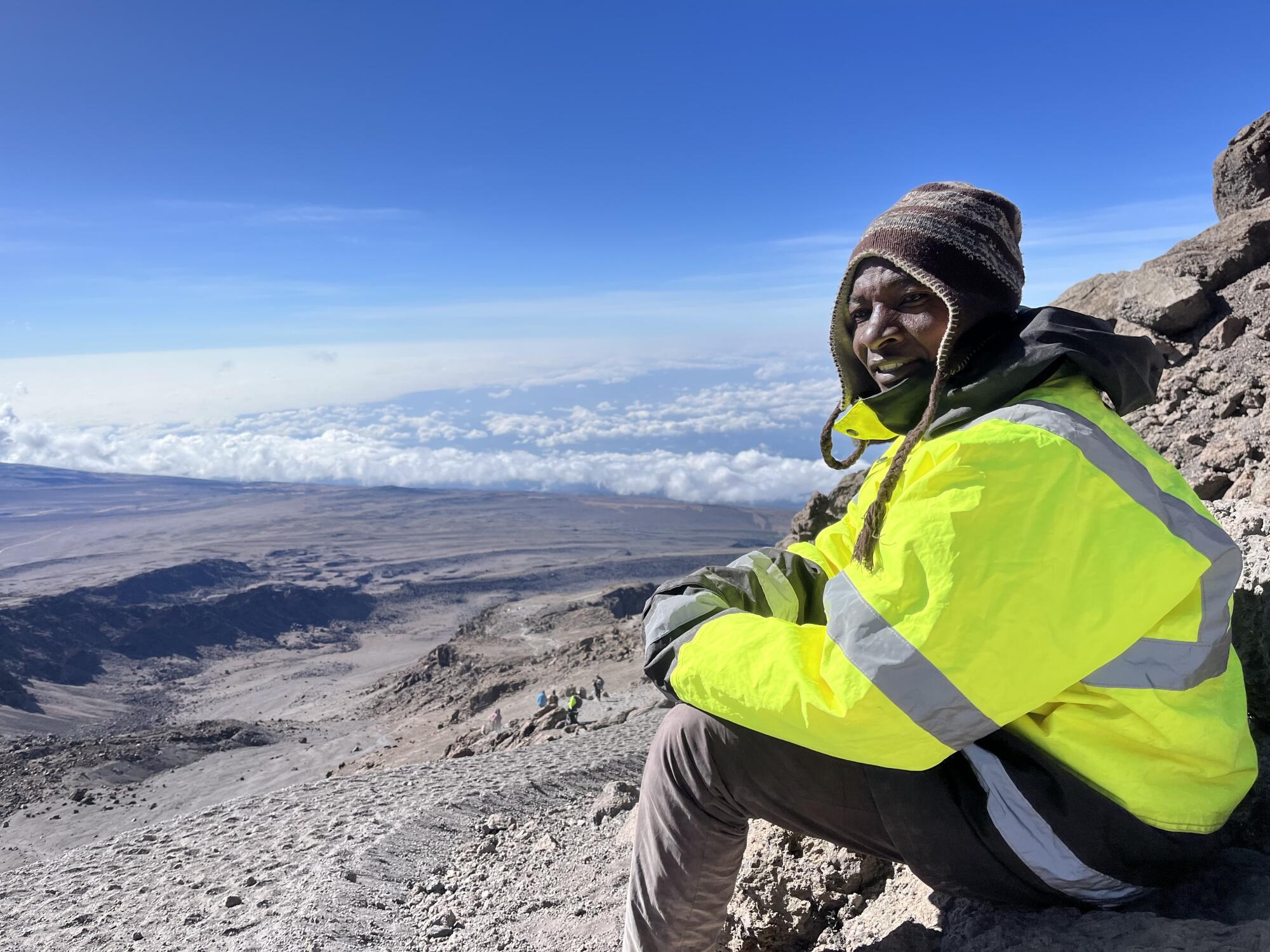
We spent the next day crossing the vast Shira plateau, a caldera formed by the collapse of an ancient volcano. We climbed to the highest point on the rim, at 12,750 feet, for a little variety.
The big test of how we would cope with the altitude came on Day Four, when we climbed to Lava Tower, a giant, toothlike rock at 15,200 feet.
That’s about 700 feet higher than California’s Mt. Whitney, the tallest peak in the United States outside Alaska, and the highest I had ever been before.
I felt every inch of the altitude on the way up. But, as usual, our porters had easily beaten us there and were cooking lunch when we arrived.
We descended to about 13,000 feet to sleep that night, and the landscape changed again. Now we were in a world of dust. It was gray, fluffy, volcanic, and it worked its way into everything: our tents, our clothes, every crevice of our bodies. For the first time on the trek, I was uncomfortable.
But we were also above the clouds, which made the sunsets and sunrises from that point on even more spectacular.
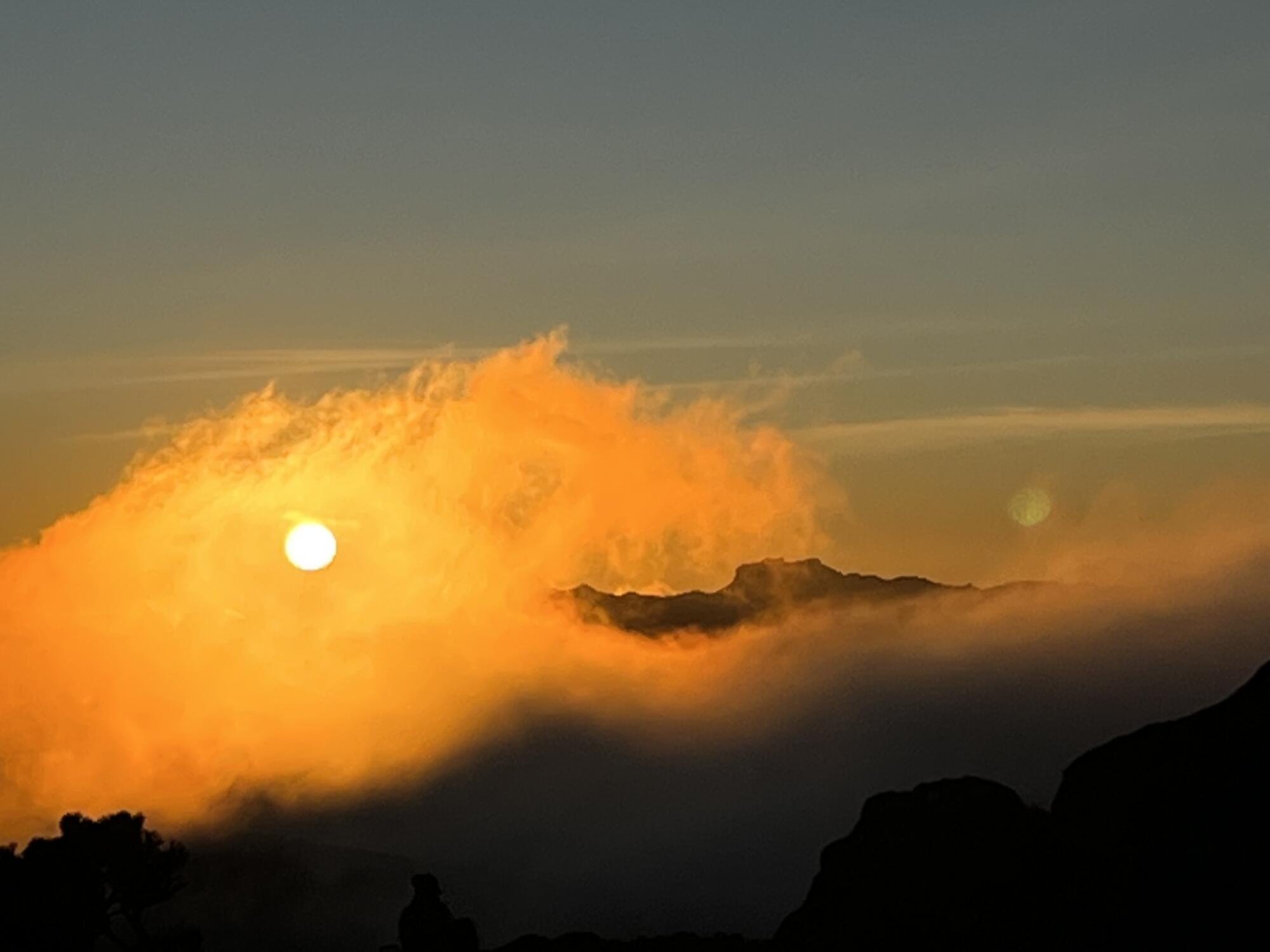
On Day Five we climbed the Barranco Wall, a steep, nearly thousand-foot rock face that required us to scramble over boulders using our hands a few times. It was the closest thing to technical climbing on the trip (a mild Class 3 for mountain nerds), but the truly impressive part was watching the porters negotiate it.
While we groped for something solid to hold onto, they waited behind us, often with huge baskets of cargo balanced on their heads. They breezed past us without missing a step as soon as we got out of the way.
It was never more obvious who were the real climbers and who were the clumsy tourists.
He was a bookish wannabe cowboy who became a seasoned mule handler in California’s Sierra Nevada. This summer he returned to see how the Sierra and he had changed over the years.
We arrived at our high camp, at 15,300 feet, in the early afternoon of the sixth day. It was cold and gray and dusty. I chatted with a very fit-looking German couple in their early 20s who were on their way down. They warned me to not underestimate the summit climb — it was the hardest thing they’d done in their lives, they said.
The plan was to have a quick lunch and then crawl into our tents to try to sleep until 11 p.m. That’s when we’d crawl back out into the dark and cold to head for the summit, aiming to arrive in the early morning to leave plenty of daylight for the long, punishing descent.

I knew there was no chance I would sleep. It was like Christmas Eve for masochists. I had been dreaming about standing on top of Kilimanjaro for most of my 54 years. There was always something in the way: the cost, work, family. Now, the barrier was only a few, unimaginably steep, miles.
The climb in the wee hours was a brutal slog. The air on the summit of Kilimanjaro is so thin that each breath brings in less than half the oxygen it would at sea level. That makes your blood thicker, your breathing shallow and your heart beat faster.
We passed group after group who were struggling. Our guides said about a third of clients have to turn back.
I spent most of the six hours before sunrise wondering which would explode first, my heart or lungs.
To calm myself, I stared at Andy’s boots in front of me. With each step, dry, volcanic dust puffed and swirled around them. Just a few years ago, we probably would have been trudging through snow and ice.
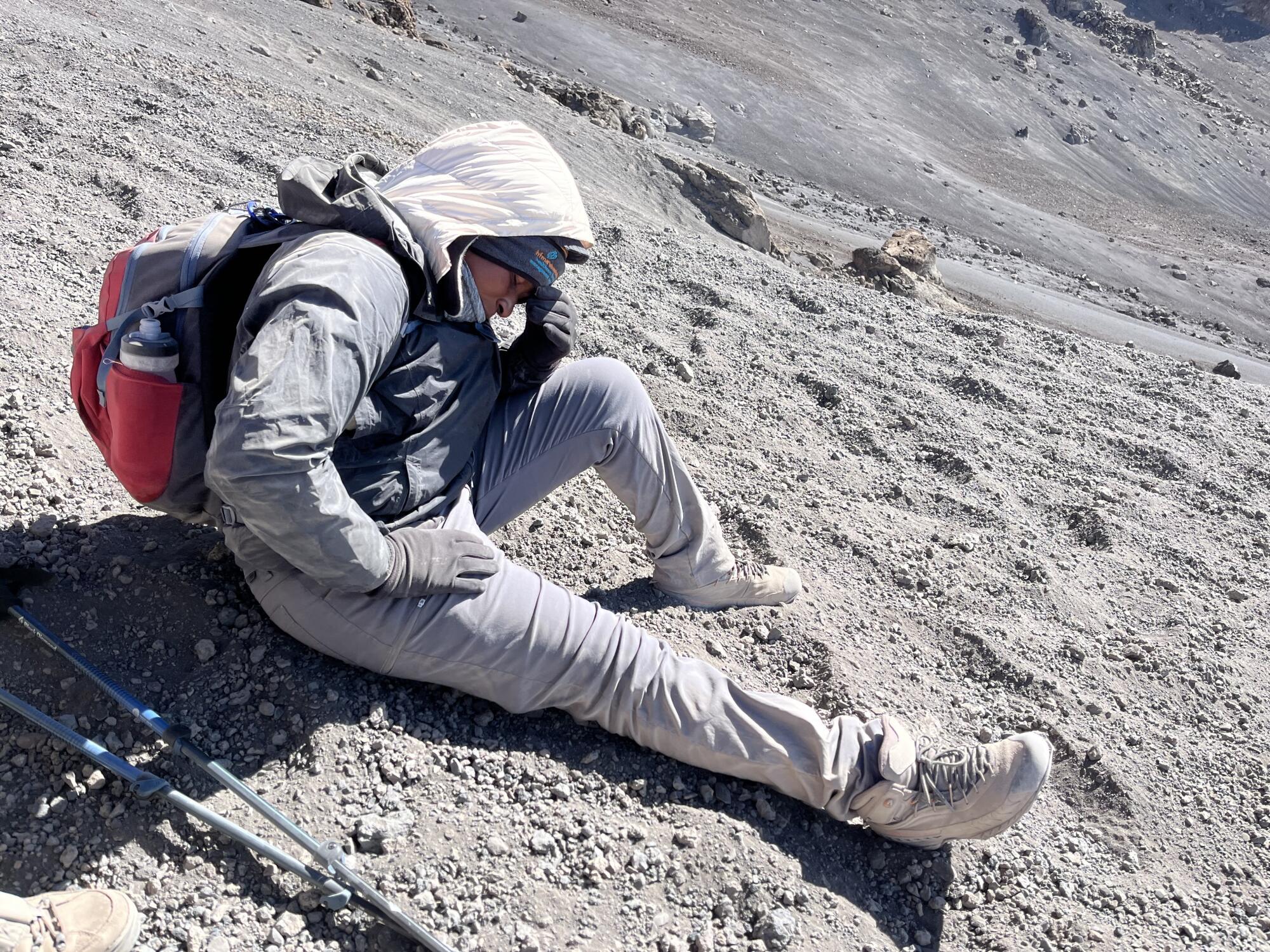
I also tried to heed Mafie’s last, gentle words of advice before we switched on our headlamps and started to climb. Don’t look up at the string of other climbers’ lights stretching above us because you’ll see how far we have to go.
“It will only make you sad,” he said.
He was right. But he and his assistant guide, Yunis Mauky, one of the few women working on the mountain, timed our ascent perfectly. As the first light crept over the horizon, we were in sight of Stella Point, at 18,885 feet, where the trail meets the rim of the volcano.
I felt unimaginable relief.
Wind turbines, solar panels and power lines are needed to confront climate change. But they’re also reshaping the West — and not always for the better.
We stopped and bathed in that warm glow for a few minutes. I began to feel my frozen extremities again. It was the kind of light that makes everyone — even dust-covered, sleep-deprived, trail-battered trekkers — look like movie stars.
Rashidi Shaban Athuman, a quiet, tireless porter who had been allowed to join our small summit team — an honor and milestone for someone hoping to become a guide — had hauled up a large, insulated thermos. To my surprise, the water was still hot enough to make tea.

From Stella Point we could see the true summit, Uhuru Peak, a few hundred feet higher and about a mile away.
Uhuru means “freedom” in Swahili. The peak got that name in 1961 after Tanganyika, in what is now Tanzania, gained its independence from Britain. The fledgling state’s anti-colonialist leader, Julius Nyerere, wanted it to stand as a symbol of hope and dignity for other African nations fighting for their freedom.
It would be an easy stroll in the warm morning light and take about an hour, but it was nothing like the victory lap I had always imagined.
The wide, surprisingly flat summit plateau looked like the surface of the moon on that morning in September. There were still remnants of the once-massive glaciers, but they were isolated, dots on the landscape, icebergs in a sea of dust.
As we stood around the giant wooden summit sign congratulating climbers on their success, I felt the joy of reaching a long-cherished goal. But I also had to accept that the Kilimanjaro I had imagined since I was a kid — that third ice cap — is already gone.
More to Read
Start your day right
Sign up for Essential California for news, features and recommendations from the L.A. Times and beyond in your inbox six days a week.
You may occasionally receive promotional content from the Los Angeles Times.
